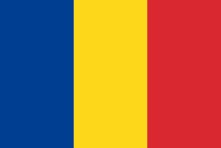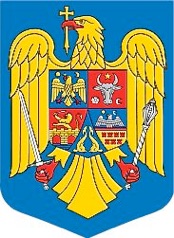Romanian Interlude
Travel journal: Fall 2008
So we tell our friends and relatives that we were going to Romania and one of them solicitously sends us an e-mail on the day of departure wishing us a good trip and happy travels in Bulgaria.
Well, to the average geography-challenged American, there is really no difference. These places could well have been Interval International vacation resorts in some distant corner of Iraq, where you can relax in sun-baked splendor at the nearby beach. Even the recent major contender for the vice-presidency of the United States needed to have her staff explain to her that there is a difference between Africa and South Africa. And she didn’t know Africa was a continent. So there you are, Nelson Mandela; eat your heart out. The only good thing what president Bush has achieved with his private war is that now more Americans think they know where Iraq is, more or less. Had he managed to declare war on more countries, as could have been his Grand Design, it would have helped to increase the geographical awareness of his unwashed masses. Regretfully not everybody shared his grandiose views.
I wonder whether Romania would mind very much. Their history has been of constant warfare. Their country is situated in a convenient corridor where over the centuries various tribes and other kindred souls have galloped through, rampaging and creating havoc in their haste to get somewhere else, or just staying there for the loot. The Dacians were there first, more or less. The Romans attacked them because the Roman treasury was running low and there was a lot of gold and silver to be captured. Under emperor Trajan, they seized 150 tons of gold and 300 tons of silver and celebrated this feat by giving a decade-long tax holiday to the Roman citizens. In return, the Romans gave them their language to use. So now the Romanian language is about as close to Latin as you can get.
After the Romans, the Goths and the Huns swept through the country. In 1242 the Mongols went through the country in their push to the West. Then the Ottoman Turks came by. Suleiman the Magnificent started his drive West in 1521 and in 1524 he was at the gates of Vienna. But the Turks, not wanting to fight these war-hardened people, left the country alone on the proviso that they had to pay tribute to them. Under Ottoman suzerainty, the country maintained full internal autonomy. In the 13th to the 17th century there was an average of 50-60 wars/century in this area. One of their great heroes, Stefan the Great, prince of Moldavia, who ruled from 1457 to 1504, had to fight 36 battles during his 47-year reign. Of those he lost only two.

In a country, where war was common, life was hard, and oppression was the rule, people may tend to enjoy more deeply whatever little they have. I am reminded of this by a popular Romanian folk song:
“What did I get out of this life?”
“What I ate”
“What I drank”
“Who I hugged”
Fast-forwarding to the current situation, the big event was the Romanian Revolution of December 1989, which resulted in the fall of the Communist regime and the restoration of civil liberties. Since then, Romanian society has transited big time into the free market. There is now a boom in the country of gigantic proportions. Everybody and his neighbor try to catch up with their more affluent Western counterparts. The rush to make money is huge.
So what are the side-effects. In the major cities, such as Bucharest, the infra-structure of their roads can barely keep up with the explosion of new cars. Because a significant portion of new wealth obviously translates into more cars and more cars. The pressure to have a new and expensive car is immense, even if you cannot afford one. And with that there are more traffic jams and more impatient drivers. The time between the changing of a red light into green and the first honk of an impatient driver is now in the picosecond range. It is comparable to what you see in Bangkok and other enlightened cities. They should really emulate the French and ban honking. There are not enough places to park, so you just park everywhere. They should allow private tow-away companies to operate in Bucharest. They would make a killing. And you really don’t want to drive a rental car in Bucharest.
But on the more pleasant aspects we see that now, almost all the women, at least in Bucharest, are dressed well. The younger ones are slim and very good-looking. The older ones are slim, and also very good-looking. If you see a fat woman waddling around, it has to be an American tourist trying to keep up with her tour group.
So what was I doing in Romania. I had collected a group of 6 to travel with Cristian Florea through the country. Cristian singlehandedly runs a small tourist agency, Crif Tours, and he came highly recommended. He impressed us with his knowledge of history in general and of Romanian history in particular. That was maybe not too hard, because almost all of our group had by now comfortably slid from virility into senior citizenship where, except for the enjoyment of good foods and wines, Father Time had long since befuddled both our limbs and brains.
Cristian, a local Romanian born and raised here, is an amazing guide. He tries his utmost to show us as much of the best of his country in the time allotted to him. And sometimes more. Which would have been really superb, had we been 20 years younger and more limber and active to be able to keep up with him. His command of English is so good that at an international conference where he was working as a translator, a Romanian politician came up to him and complimented him on his command of the Romanian language. “Where did you learn to speak Romanian so beautifully” he wanted to know. And for two days he was the translator-guide to Bill and Chelsea Clinton, when Bill was in Bucharest promoting his personal biography, “My Life”. But like many Romanians on the up and go, he is an impatient driver, and at times will express himself in a colorful vocabulary probably not included in the standard Romanian dictionary. But he drives well. And he is still a superb guide, whom I would heartily recommend.

right: The Romanian Coat of Arms.
The shield on the eagle is divided in 5 fields, each describing a historical province of Romania. Going clockwise starting on the top left corner we have (1) a golden eagle for Wallachia, (2) an auroch, which is a bull-like animal, but of course more godlike and noble, for Moldovia, (3) a black eagle, seven castles, a sun and a moon, for Transylvania, (4) dolphins for Dobrogea, and (5) a lion an a bridge, for Oltenia and Banat.
We also spent two days in Romania as part of a river cruise by Vantage. This means that during the land excursions all of the 160 passengers of the ship are bussed like so much livestock to take us to our tour destinations. But even in subgroups of 40 each, this is really not the way to obtain an understanding of the country. The population, bless their heart, at least didn’t gawk at us as we were being herded around like cattle from one sight to another. And if they had disdain or pity for us, they didn’t show it. And unless you stay near your guide to hear him explain, you might as well be on Mars.
Vantage did have a better system on some of their other land excursions. Here everybody is fitted with an earphone connected to a little receiver. The guide has the transmitter, so you can wander away a bit and pretend you don’t belong to the herd. But you can still follow the explanations being beamed to the receivers within a radius of maybe 50’, taking pictures with one hand, making notes with the other, and using a third hand to adjust your collar against the cold wind.
You are probably still waiting for me to explain where Romania is located. Sorry, you have to do that yourself. But it shares a border on the West with Hungary and Serbia, on the Northeast with Ukraine and the Republic of Moldova, and with Bulgaria on the South. Romania is about 500 miles long north to south and about 750 miles east to west.
The two biggest regions are Wallachia and Transylvania. Wallachia is south of the Carpathian mountains and it is bordered on the south by the Danube; in the middle of the country, north of the mountain range, is Transylvania, famous to the layman because this is where Count Dracula presumably had lived. Further north to the east there is the region of Bucovina and to the east there is Moldovia, which abuts the republic of Moldova under the Russian umbrella, and which is of course contested by Romania. In addition, there is Dobrogea, the region which abuts the Black Sea. To round off the list, there is Banat and Crisana on the West, and Maramures on the north. You can look at a map by clicking here.






